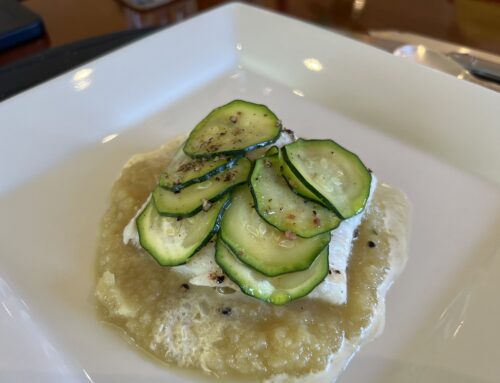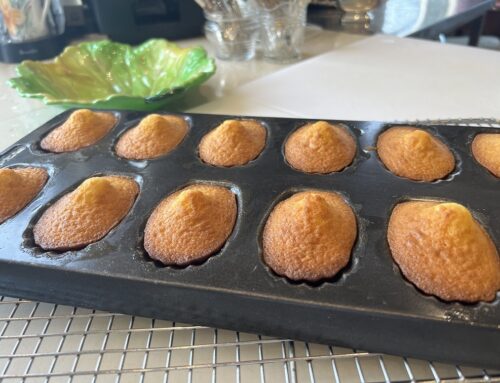There are always interesting cooking topics discussed in the classes, usually associated with the ingredients we are using. In a recent class I was asked about verjuice….so I did some research and thought you all might to know more about it as well.
Down through the centuries grapes have been used to make many products and little is wasted when this fruit is picked. Verjuice is result of unripened grapes left on the vines.
Verjuice is the acidic juice extracted from large unripened grapes; it is yeast free and unfermented. It is a tart alternative to vinegar and lemon juice, but has a slightly sweeter and more delicate green aroma. Primarily grapes are used but Verjuice can be made from crab apples, unripe plums or gooseberries. Sometimes lemon, sorrel juice, herbs or spices are added to change the flavour.
It has a light acidity and is used in place of vinegar or lemon as a delicate flavouring for many dishes. In the Middle Ages, sour flavourings such as verjuice and vinegar were used a great deal in cooking, before citrus were commonly available.
Over the centuries it has been used as a sauce ingredient, a condiment and in deglazing. According to the Larousse Gastronomique, it has been said, that the word verjus meant sauce verte or green sauce and was sold in the streets of Paris!
Verjuice derives its name from the French “vert”, meaning green and “jus”, meaning juice, this product can be traced back to Medieval Times when it had important culinary, practical and medicinal uses. It probably originated when vignerons thinned out the grapes to strengthen the vines and produce full flavoured fruit. Not wanting to waste the unripe, pruned grapes they pressed the grapes and made verjuice. The Spaniards, in the Middle Ages, made it from oranges which were more tart and bitter than the oranges we have today.
Verjuice is delicious drizzled over oysters, grilled fish or barbequed baby octopus, as a marinade, substituted for balsamic vinegar when caramelizing onions or added to dishes to reduce the richness of sauces or meat dishes, especially pork. Use verjuice as an acidic ingredient in salad dressings, where you may substitute it for the vinegar or lemon juice.
Substitute verjuice for wine or brandy and use it in deglazing pans after cooking fish or meats to create a tangy sauce from the reduced juices. Also use it to poach fresh fruit, to soak dried fruit before you use it, and then reduce and use as a topping over ice cream or mix with soda or tonic for a zesty cordial.
Basically there are endless uses today; the same as hundreds of years ago. So experiment and use it to suit yourself.
Maggie Beer is Australia’s foremost promoter of Verjuice. She was the first in the world to produce it commercially and she includes it whenever she can in her recipes. She has now published a little book devoted to it called ‘Cooking with verjuice’ – you may enjoy reading more about verjuice there.
http://www.maggiebeer.com.au/products/verjuice






